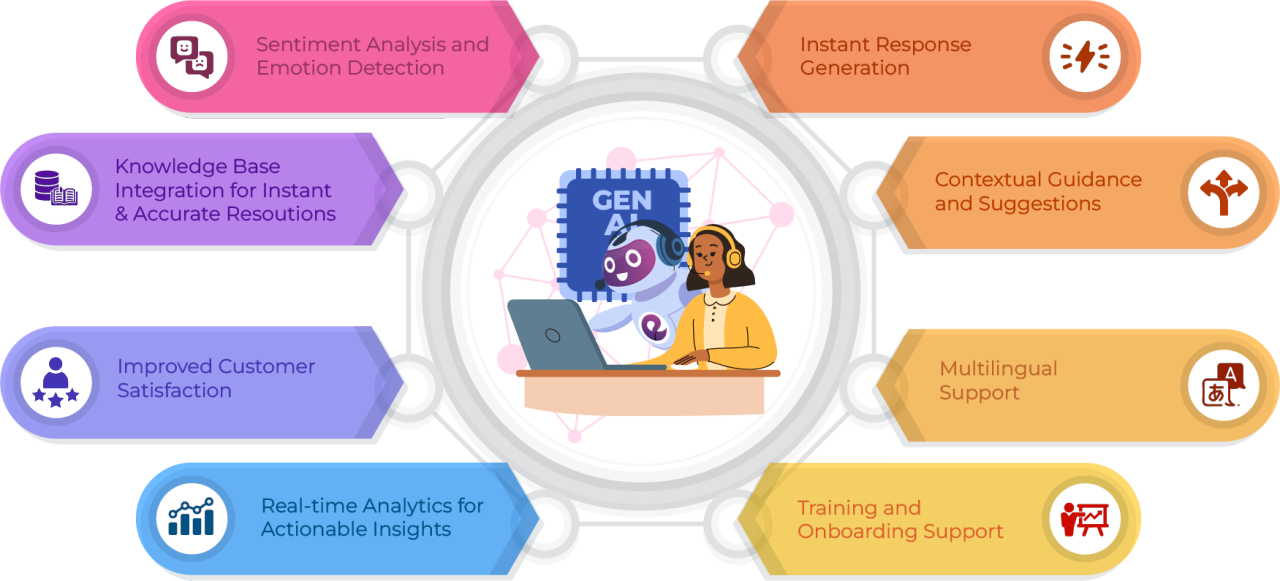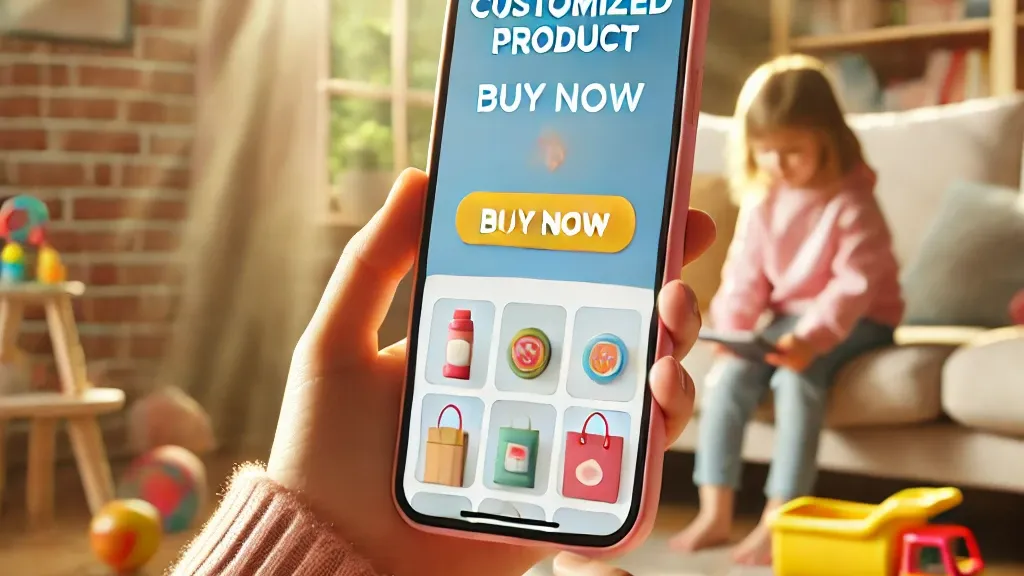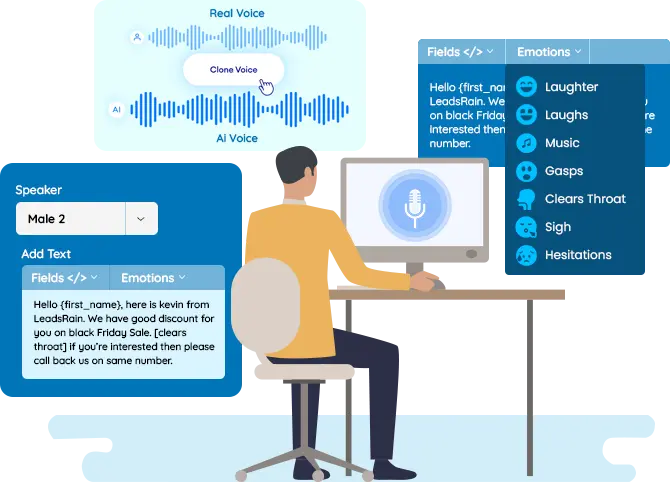In today’s competitive marketing landscape, standing out in a crowded inbox or phone call list can be a challenge. With consumers receiving countless messages every day, the key to capturing attention lies in personalization. When it comes to voicemail drops, personalized messages have proven to be far more effective than generic ones. By crafting tailored messages that resonate with recipients, you can increase engagement, build stronger relationships, and ultimately drive better results. Here’s how to leverage personalization in your voicemail drop campaigns for maximum impact.
Why Personalization Matters in Voicemail Drops
Personalization is more than just inserting a recipient’s name in the message. It’s about creating an experience that speaks to their specific needs, preferences, and pain points. Studies show that personalized content leads to higher engagement rates, with recipients being more likely to listen to a voicemail message, take action, or convert into customers.
Personalized voicemail drops make your message feel more relevant and considerate, which helps build trust and rapport. When customers feel like a brand understands their unique situation, they’re more likely to listen to your offer and act on it. This is particularly important for businesses that rely on building long-term customer relationships, as personalization can foster loyalty and encourage repeat business.
Key Personalization Strategies for Voicemail Drops
To effectively personalize your voicemail drops, it’s essential to go beyond using a recipient’s name. Here are some strategies to help you craft more personalized and engaging messages:
1. Segment Your Audience
The first step in personalizing your voicemail drops is segmenting your audience. Not all customers are the same, and a one-size-fits-all approach won’t resonate with everyone. By segmenting your audience based on factors such as demographics, purchase history, interests, and engagement patterns, you can create more targeted messages that speak to the specific needs of each group.
For example, if you’re running a promotional campaign for a new product, tailor the message to different customer segments. A loyal customer who has bought similar products in the past might receive a message highlighting how the new product complements their previous purchases, while a first-time buyer might get a message explaining the benefits of trying the product for the first time.
Tip: Use customer relationship management (CRM) tools or marketing automation software to help segment your audience and deliver more personalized messages.
2. Address Customer Pain Points
Personalization becomes even more powerful when you address specific customer pain points. If your product or service solves a particular problem for your target audience, mention it in your voicemail message. This creates a sense of relevance and urgency that encourages the recipient to take action.
For instance, if you’re selling a time-saving software, you might craft a voicemail drop message like this:
“Hi [First Name], we know how busy you are, and that’s why we created [Product Name]. It’s designed to save you hours each week, so you can focus on what matters most. Give us a call today to learn more!”
By speaking directly to the customer’s needs and frustrations, you show that you understand their challenges and have a solution that can help.
3. Use Dynamic Content for Real-Time Personalization
Dynamic content refers to customizing the message content based on the real-time context of the recipient. With advancements in marketing automation, you can craft voicemail drops that are even more personalized by using dynamic elements, such as location, recent activity, or behavioral triggers.
For example, if you know that a recipient recently abandoned a shopping cart on your website, you can personalize the voicemail message to remind them of the items they left behind and offer an exclusive discount to encourage them to complete their purchase.
Example: “Hi [First Name], we noticed you left a few items in your cart at [Brand Name]. We’d love to help you finish your purchase, and as a thank-you for coming back, we’re offering 10% off your order. Call us today to claim your discount!”
4. Craft a Relevant Call to Action (CTA)
A well-crafted call to action (CTA) is critical to the success of your voicemail drop. Make sure your CTA is relevant to the recipient and aligns with their specific interests or behavior. For example, if you’re reaching out to a customer who attended a webinar or downloaded an eBook, your CTA might encourage them to schedule a demo or speak with a sales representative to learn more.
Example: “Thanks for downloading our free eBook, [First Name]. If you’re ready to take the next step, I’d love to schedule a quick call to discuss how our solution can help you [solve a specific problem]. Call us at [Phone Number] or reply to this message!”
The more relevant and personalized your CTA is, the more likely the recipient is to take the desired action.
5. Keep It Natural and Conversational
While personalization is key, it’s also important to ensure that your voicemail message doesn’t sound robotic or overly scripted. A message that feels too mechanical can come across as insincere or off-putting. Aim for a conversational tone that feels natural and engaging.
Start by addressing the recipient by name and using informal language that makes the message feel like it’s coming from a real person, not a company. Avoid overly formal phrasing or too much jargon. Instead, use a friendly, approachable tone to create a connection with the recipient.
Example: “Hey [First Name], it’s [Your Name] from [Brand Name]. I wanted to quickly let you know about something exciting that I think you’ll love. Let me know if you’re interested!”
This type of message feels more personal and can be more effective in encouraging engagement.

Best Practices for Personalized Voicemail Drops
To get the best results from your personalized voicemail drops, follow these best practices:
- Keep it short and sweet: Recipients are more likely to engage with messages that are brief and to the point. Focus on delivering your message in 30 seconds or less.
- Make it relevant: Always tailor your message to the recipient’s interests, behavior, or pain points. The more relevant the message, the more likely it will resonate.
- Use high-quality audio: A clear, crisp audio message is crucial for ensuring your voicemail is easy to understand. Avoid poor audio quality or background noise.
- Test and optimize: Like any marketing tactic, testing is essential. Try different versions of your voicemail drop to see which personalization techniques lead to the highest engagement rates and conversions.
Leveraging Customer Data for Enhanced Personalization
Personalizing voicemail drops goes beyond simply using the recipient’s name. The more you understand your customers’ behaviors, preferences, and interactions with your brand, the better you can tailor your messages. Collecting and analyzing customer data can provide deep insights into what drives your audience, allowing you to create truly personalized and impactful voicemail messages.
- Purchase History: By analyzing a customer’s past purchases or browsing history, you can offer personalized recommendations. For example, if a customer bought a specific product, you could send them a voicemail offering complementary products or an exclusive discount on their next purchase.
Example: “Hi [First Name], it’s [Your Name] from [Brand Name]. We noticed you recently purchased [Product]. We thought you might love our new line of accessories that perfectly complement your choice. Call us today to learn more!” - Engagement with Previous Campaigns: If a customer has interacted with previous campaigns—whether they attended a webinar, clicked on an email link, or engaged with social media—use this information to create relevant follow-up messages. This increases the likelihood of continuing the customer’s journey.
Example: “Hey [First Name], thanks for attending our webinar last week on [Topic]. We have some additional resources that could help you further, and I’d love to discuss how we can support your needs. Give me a call to set up a quick chat!” - Location-Based Personalization: With geographic data, you can send personalized messages about location-specific events, promotions, or store openings. This makes your message more relevant and timely, improving customer engagement.
Example: “Hi [First Name], we’re excited to announce that we’re opening a new store near you in [City]. To celebrate, we’re offering exclusive discounts for a limited time. Drop by or call us for more details!”
By using customer data in a thoughtful and privacy-compliant way, you can craft highly targeted and personalized voicemail drops that resonate more deeply with your audience.

Creating a Sense of Urgency Without Being Pushy
One of the keys to a successful voicemail drop is creating a sense of urgency that compels the recipient to take action, without coming across as too aggressive or salesy. Personalization can help achieve this by highlighting time-sensitive offers or events that are specifically relevant to the recipient.
- Limited-Time Offers: Personalize urgency by making it clear that a special offer or promotion is available exclusively for the recipient, but only for a limited time.
Example: “Hi [First Name], I wanted to let you know that we have an exclusive 48-hour flash sale just for our loyal customers like you. Don’t miss out—call us before the offer ends!” - Exclusive Access: If you’re offering early access to a new product or event, personalize the message by telling the recipient they have priority or special access based on their past behavior or status.
Example: “Hi [First Name], as one of our valued customers, you’re getting early access to our new [Product]. Be the first to try it out before it’s released to the public. Call us today to secure yours!” - Event-Driven Urgency: If an event such as a webinar, appointment, or meeting is coming up, let the recipient know that their spot is limited or that registration is closing soon.
Example: “Hey [First Name], we’d love for you to join our exclusive webinar on [Topic], happening this Thursday. Spots are filling up fast, so be sure to register today to secure your place!”
By using urgency thoughtfully and tailoring it to the recipient’s needs or interests, you encourage quick action without overwhelming or alienating them.

Analyzing Results and Iterating Your Strategy
After implementing personalized voicemail drops, it’s crucial to assess their effectiveness and make necessary adjustments for improved performance. By tracking key metrics, you can gain insights into what’s working and what isn’t, allowing you to fine-tune your approach for even greater success.
- Track Call-Back Rates: The primary indicator of a successful voicemail drop is the response rate. How many recipients are calling back after receiving your message? By tracking this, you can gauge whether your message is engaging and compelling enough to drive action.
- Measure Conversion Rates: Beyond just call-backs, track how many recipients ultimately convert, whether that means making a purchase, scheduling a consultation, or signing up for a service. This will help you understand the direct impact of your personalized voicemail messages on your business outcomes.
- Assess Engagement: If your voicemail drop encourages further interaction—such as replying to a message, visiting a website, or engaging on social media—track these metrics as well. This will help you evaluate whether your message was truly resonating with the recipient.
- A/B Testing: Continuously test different variations of your personalized messages to find out which elements (tone, CTA, content, timing) lead to better engagement and conversion. Use the insights from these tests to iterate on your voicemail drop strategy and refine your approach.
By regularly reviewing these key metrics and adjusting your strategy based on results, you ensure that your voicemail drops remain effective and relevant, maximizing your ROI over time.
The Power of Personalization in Voicemail Drops
Personalization in voicemail drops is a powerful tool that can significantly enhance the effectiveness of your marketing campaigns. By segmenting your audience, addressing customer pain points, using dynamic content, and crafting relevant CTAs, you can create messages that resonate with recipients and drive action. By following best practices and consistently optimizing your approach, you can ensure that your voicemail drops stand out and yield better results for your business.
In a world where customers expect personalized experiences, leveraging the power of voicemail drops is an essential strategy for improving engagement, building trust, and boosting your marketing ROI.

